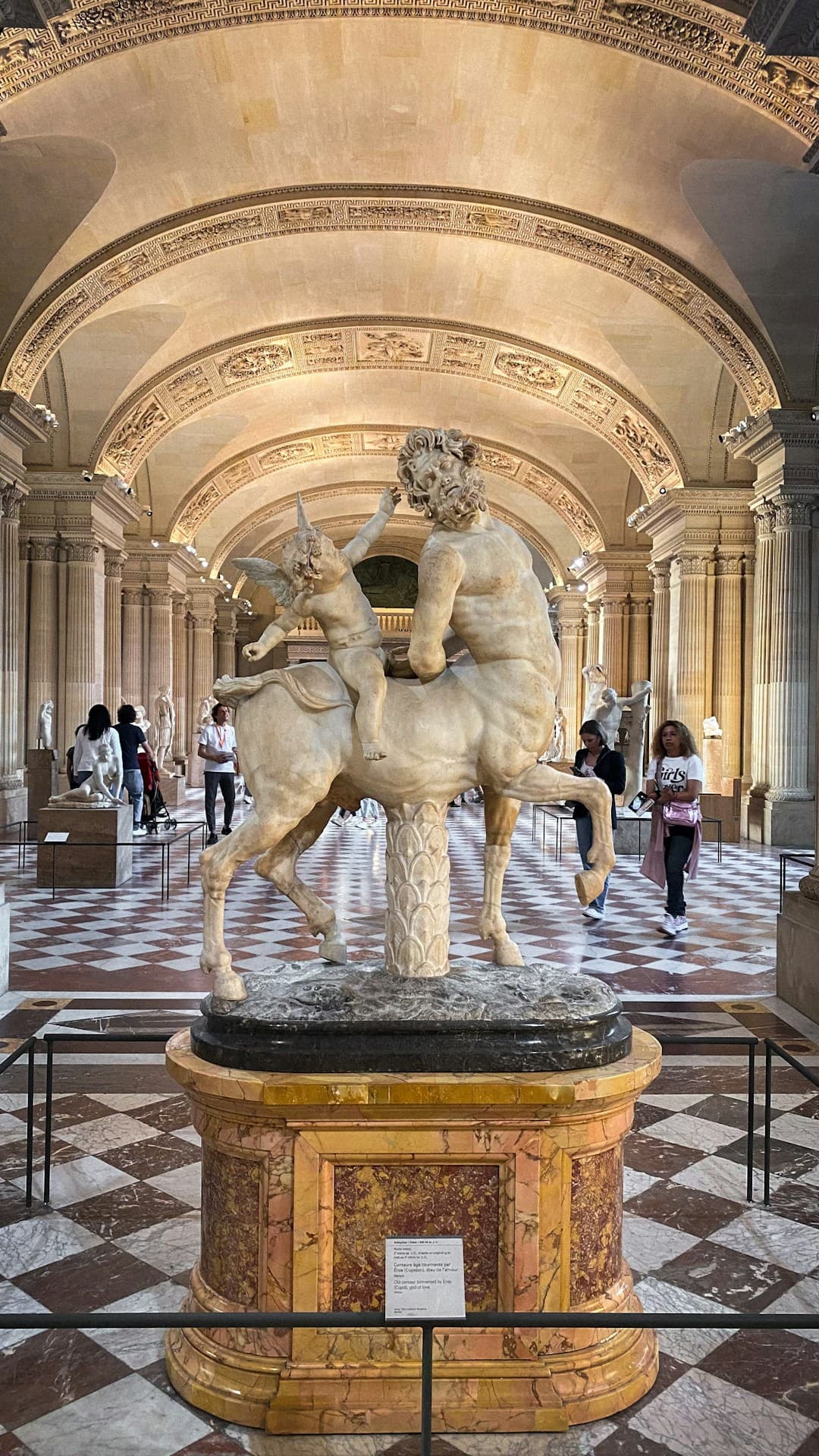Audio GuideLouvre Museum
Musée du Louvre
Former historic palace housing huge art collection, from Roman sculptures to da Vinci's "Mona Lisa."
In the heart of Paris, beside the serene Tuileries Garden, stands the Musée du Louvre—a grand palace and the largest museum in the world. Its history spans more than eight centuries, beginning in the late twelfth century as a fortress built by King Philip the Second to protect the city. Where elegant galleries now stretch, sturdy walls, watchful towers, and a deep moat once stood.
When Paris blossomed in the fourteenth century, the fortress was transformed into a royal residence, its chambers echoing with the footsteps of kings such as Charles the Fifth. Over the centuries, each monarch left their mark, expanding and reshaping the palace—Renaissance façades, classical columns, gilded ceilings, and magnificent courtyards gradually took form.
A turning point came with the French Revolution. In the late eighteenth century, the palace became a public museum, opening its doors for the first time to everyone, not just the privileged few. The collection grew, particularly during Napoleon’s reign, when his campaigns brought back artworks and ancient artefacts from across Europe and beyond. While some treasures eventually returned to their original homes, many iconic masterpieces remain, inspiring millions to this day.
Conflict played a dramatic role in the museum’s story. During both World Wars, curators discreetly evacuated thousands of priceless works—from the enigmatic Mona Lisa to the imposing Winged Victory—hiding them in the French countryside to keep them safe. Once peace was restored, the Louvre reopened and its galleries were returned to their former glory.
Today, the museum welcomes visitors at the gleaming glass pyramid—where striking modern design stands alongside the dignity of the historic palace. Inside, the Louvre’s vast collections are divided into eight departments. The Egyptian rooms offer insight into the beliefs and daily life of the pharaohs; nearby, galleries dedicated to Greece and Rome sparkle with statues, mosaics, and ancient temples. The Islamic Art section shimmers with delicate ornaments and ceramics, revealing centuries of creative expression from Spain to India.
The painting galleries draw visitors to celebrated masterpieces such as Leonardo da Vinci’s Mona Lisa, Delacroix’s Liberty Leading the People, and works by Raphael, Vermeer, and Rembrandt. The sculpture and decorative arts collections display everything from heroic figures carved in marble to royal jewels and exquisite tapestries. Every gallery brings to life a different world, capturing sweeping changes in history and artistic style.
The Louvre’s architecture weaves together past and present. Medieval stone walls still stand beneath the museum, while lavish seventeenth-century drawing rooms showcase the opulence of another era. The glass pyramid, introduced in the late twentieth century by architect Ieoh Ming Pei, links old and new, giving the Louvre a fresh spirit without losing its noble soul.
Beyond its masterpieces, the Louvre tells the story of France itself—from royal grandeur to revolution, from the devastation of war to cultural renewal. It stands as a testament to the nation’s pride, its openness to the world, and its enduring quest to protect and celebrate creativity. For anyone drawn to art, architecture, or the living heart of Paris, the Louvre is unmissable—a place where centuries of human achievement shine together beneath a single remarkable roof.



